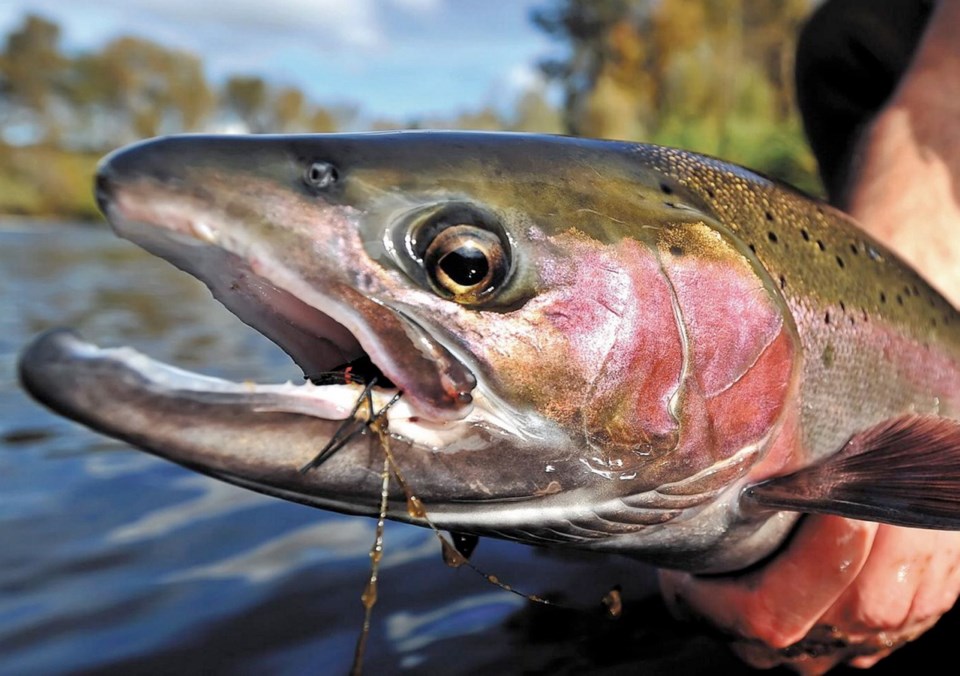Many West Coast Indigenous people call themselves the “salmon people,” because salmon are so integral to their culture, diet, community and way of life.
In a larger sense, all British Columbians are salmon people. The silver flash of leaping coho, the long struggle of spawning sockeye, the spectacle of bears flipping chum onto a stream bank and orcas streaking after a school of chinook are central to us all.
But today, our salmon and other sea-going fish are not only in deep trouble, the laws for protecting such fish are profoundly broken. Enforcement of the law must improve, if we are to long remain salmon people.
For example, in February we learned that Chilcotin and Thompson River steelhead trout face a catastrophe. Their populations have plummeted 80 per cent over the past 18 years. Only 58 fish returned to the Chilcotin River this year, and 177 to the Thompson.
Canada’s scientific panel on endangered species responded by issuing an emergency assessment that these steelhead are at “imminent risk of extinction.” A fat lot of good that will do the fish.
The problem is that the federal government routinely withholds protection for endangered fish species — directly contrary to scientific advice from the Committee on the Status of Endangered Wildlife in Canada (COSEWIC). As a general rule, Ottawa will simply not protect fish species that affect commercial-fishing interests.
Look at the track record. The government authorized the scientists at COSEWIC to conduct statutory assessments of endangered species in 2002. Since then, COSEWIC has concluded that 62 fish species were “at risk,” but the government has listed only 12 for Species at Risk Act (SARA) protection.
The government’s record on sea-going fish is particularly abysmal. For example:
• In 2002, COSEWIC assessed the Sakinaw Lake sockeye as endangered. The government refused this advice, citing socio-economic reasons. The government has continued to leave them off the endangered list ever since, even through a three-year period where “zero or one” wild fish returned.
• Similarly, COSEWIC assessed Cultus Lake sockeye as endangered in 2002, but the government chose not to list the species. Their numbers have dropped almost 40 per cent since.
• In the Maritimes, COSEWIC has assessed Atlantic cod and Atlantic bluefin tuna as endangered for some time. But the government has failed to formally list them as endangered under SARA. Instead, fishing quotas were actually increased for both species.
The problem is that the government typically withholds endangered species status for a fish if the fish is part of — or associated with — a commercial fishery. One study has concluded that the government has denied SARA listing to all fish that have an estimated socio-economic cost above zero.
For example, COSEWIC assessed the porbeagle shark as endangered in 2004. But the government chose not to list the species because of socio-economic concerns, even though only one or two fishers’ livelihoods were dependent on porbeagle. Simon Fraser University professor Arne Mooers commented that such decisions “reflect an implicit policy not to list any marine fish perceived to be of economic value, no matter how small.”
The Canadian track record is particularly troubling in light of the fact that the U.S. Endangered Species Act explicitly prohibits the government from allowing socio-economic factors to trump science when deciding to protect endangered species.
It is no wonder that the chair of COSEWIC, University of B.C. zoology professor Eric Taylor, has recently decried the Canadian government’s poor record of protecting commercially-exploited fish that scientists deem endangered.
Clearly, Canada’s Species at Risk Act has failed our salmon, steelhead and other sea-going fish. But, now the Trudeau government faces a true litmus test. It must make a decision about whether Ottawa will follow its past cavalier approach — or immediately list the Chilcotin-Thompson steelhead as endangered.
After all, if Canada’s endangered-species law cannot protect the last 58 individuals in the Chilcotin River, what good is it? It’s time for the government to finally follow the science and protect the steelhead — and the salmon that have been abandoned in the past.
We, the salmon people, demand no less.
Calvin Sandborn is legal director and Rebecca Whitmore is a law student at the University of Victoria Environmental Law Centre.



